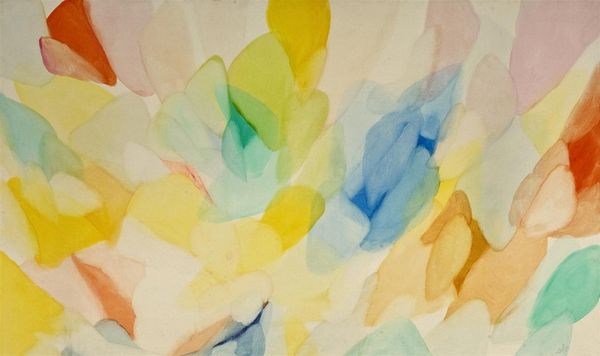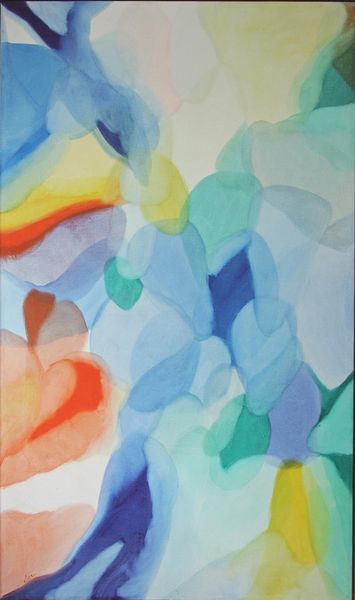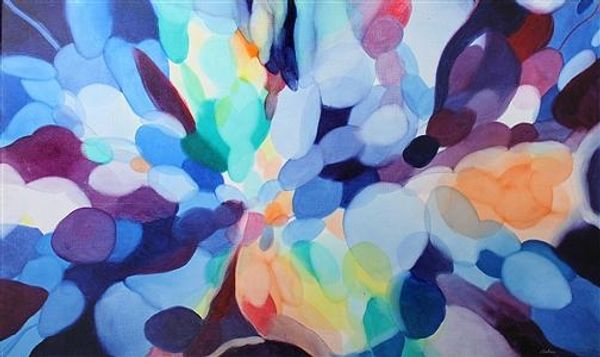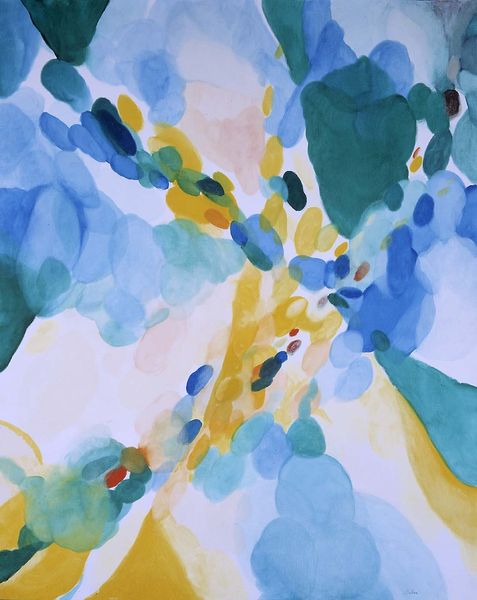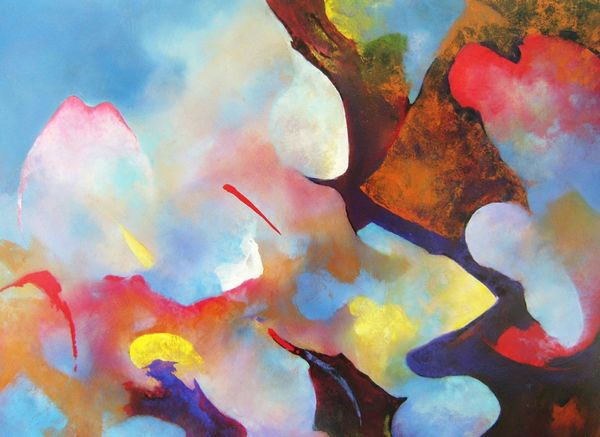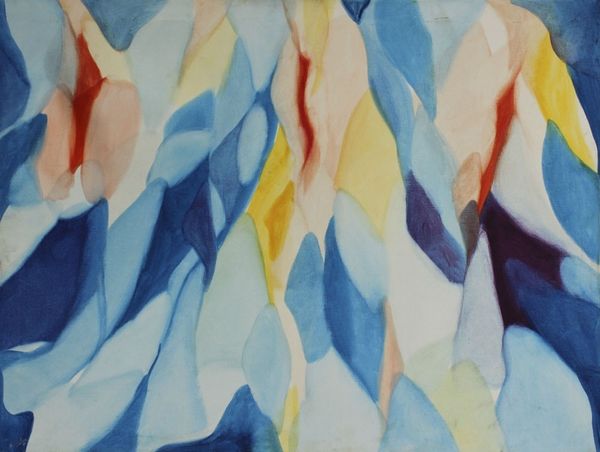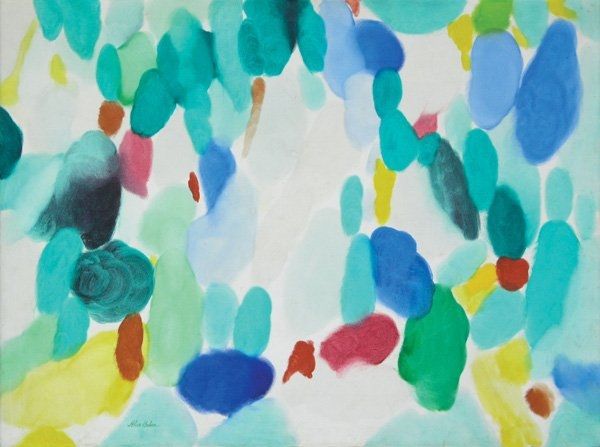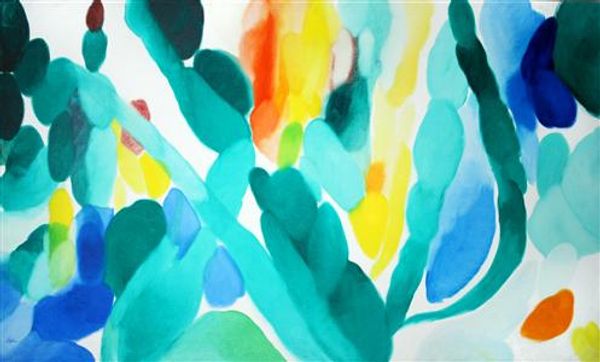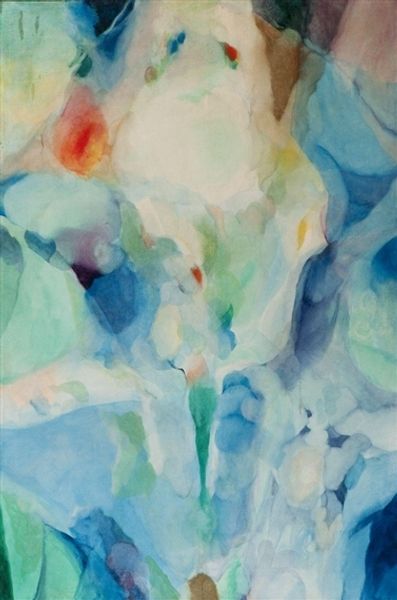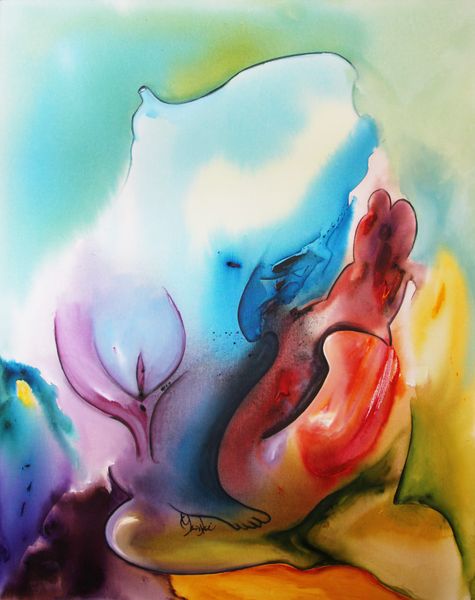
Copyright: Alice Baber,Fair Use
Curator: Immediately, I am struck by the almost celestial glow. The use of color feels very dream-like. Editor: We’re looking at Alice Baber’s “Wheel of Day,” completed in 1971. It’s an acrylic on canvas painting, exemplary of her contributions to the Colour Field movement. Curator: It is like a dance of colour across the surface, the way she's used thinned acrylic allowing them to subtly blend into each other creating this ethereal quality, and repeating organic shapes that create movement across the canvas, is it an optical trick to conjure space? Editor: I agree about the ethereal effect! And that light is particularly powerful considering the time it was made. As the second wave of feminism gained momentum, Baber and other women artists wrestled against the traditionally male-dominated world of abstract expressionism and even colour field painting. Curator: The scale too, it’s grand. Did Baber’s materials and making techniques impact the marketability and reception of her work in this social environment? Was she considered less serious because of her style? Editor: It’s a valid question. Gender undoubtedly shaped the reception of her work. The almost “feminine” qualities of colour and flowing forms, compared to more traditionally “masculine” aggressive and grand styles like Pollock’s action paintings may have contributed. It's interesting to note the similarities and contrasts between her practice and other artists considered to be part of Colour Field painting like Mark Rothko. But in recent years, there has thankfully been renewed critical interest, examining the contributions of female abstract painters like Baber, helping us to more deeply analyse movements within the art world and to examine the materials, processes, and critical reception of this generation of artists with a wider range of voices. Curator: Absolutely. Considering her artistic peers, looking into the production processes and reception offers interesting context in her placement within art history. And the acrylic itself allows this build-up of luminous color, layering that invites that contemplative interpretation from today's viewer, allowing us to engage differently with painting techniques. Editor: Seeing it that way provides such valuable new dimensions.
Comments
No comments
Be the first to comment and join the conversation on the ultimate creative platform.
